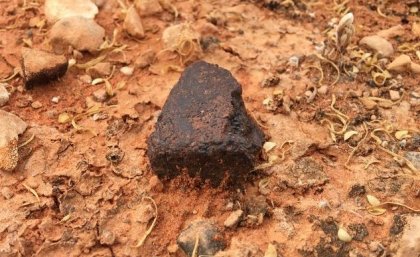
Australian researchers have revealed a surprising new target in the search for life on Mars.
Professor Gordon Southam of the University of Queensland School of Earth and Environmental Sciences said researchers were now casting their gaze down to Earth, examining stony meteorites for clues that could help in the search for life on the red planet.
“Stony meteorites, which are sterile when they fall to Earth, provide a unique substrate for the growth of lithotrophic (rock eating) microorganisms” Professor Southam said.
“Researchers from UQ, Monash University and the Australian National University examined meteorites collected from Australia’s Nullarbor Plain, which revealed that they serve as habitats for ‘unique’ terrestrial microorganisms, discovered inside the meteorites.
“This adds a new dimension to the search for life on Mars, targeting comparable meteorites on the red planet.”
Professor Southam said the findings were significant because they demonstrated that life was able to thrive inside stony meteorites, even when the outside environment was generally too harsh to support life.
“Essentially they provide a time capsule of past biological activity or, in the case of the samples from the Nullarbor Plain, meteorites can serve as a refuge for life.”
UQ researcher Dr Emma Gagen said the use of molecular techniques, which analysed microbial DNA, allowed the research team to identify all the microorganisms in each sample without having to grow them in the laboratory.
“DNA analysis of the Nullarbor Plain meteorites and the soil directly below them demonstrated that, even when found kilometres apart, the microbial community inside meteorites bore a closer resemblance to other meteorites of a similar composition than to the soil on which they resided,” she said.
“We concluded that the meteorites were supporting a unique population of microorganisms using the meteorite as food.”
The findings, published in Geochimica et Cosmochimica Acta and Frontiers in Microbiology, are part of a broader research project on using biomarkers in meteorites as a means to detect life throughout the solar system.
Media: Professor Gordon Southam, g.southam@uq.edu.au, +61 7 3365 8505; Dr Emma Gagen, e.gagen@uq.edu.au, +61 7 3365 9778.
.jpg)











